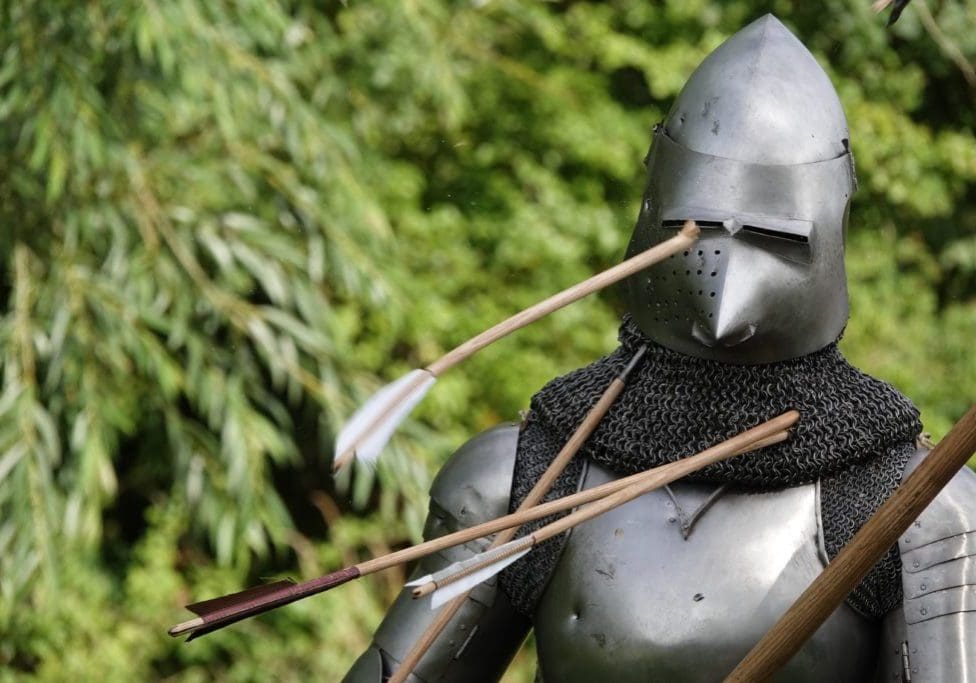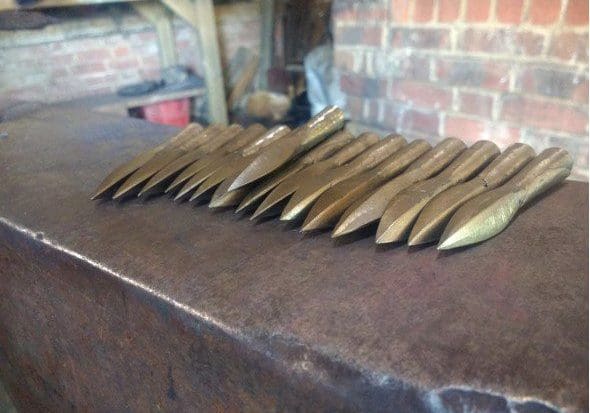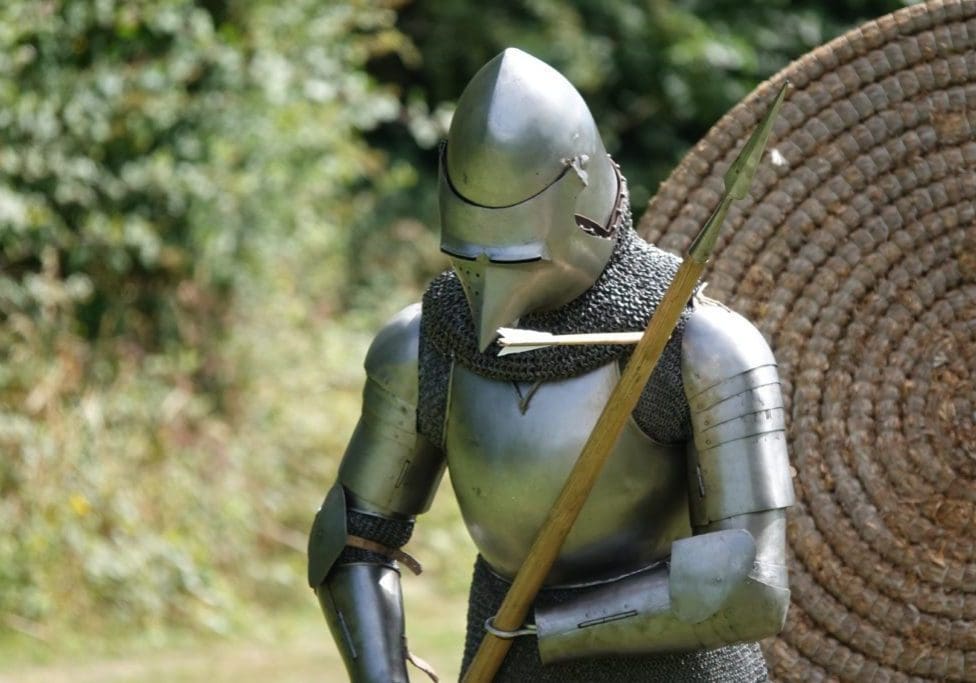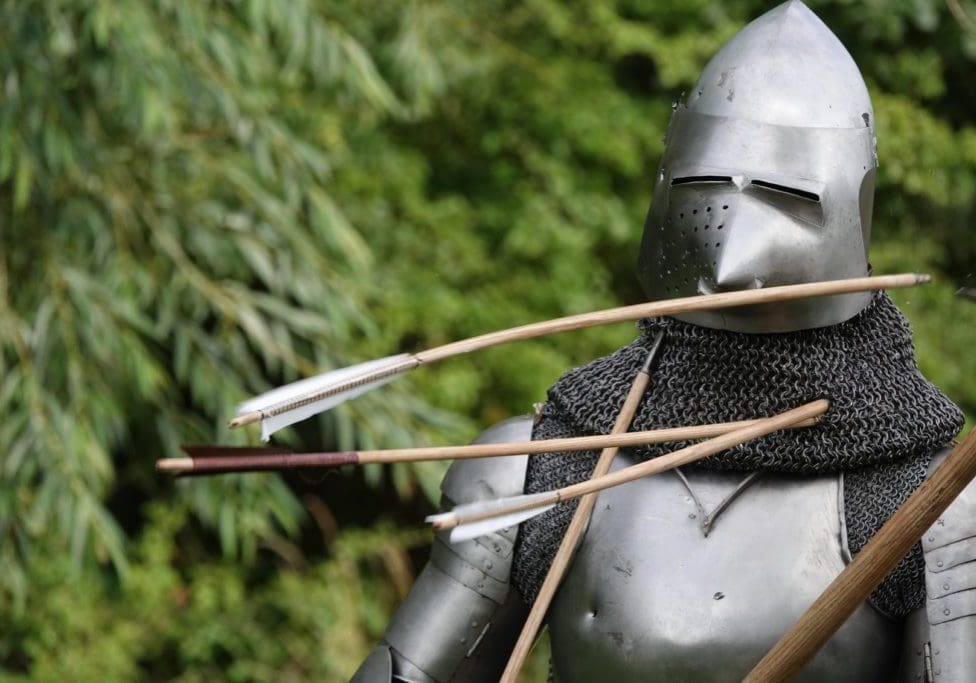War bow weight test
War bow weight test
One of the biggest problems we face in exploring what longbows could do and did do to armour is that we don’t even know how powerful the longbows were. We have written accounts of the battles, we have the armour of the time, we have pictures and paintings and arrow heads, but no bows. Not one.
This means that we have to decide what we feel is a representative specification for the arrows and longbows that were used in open field warfare and our opinion may well differ from yours. Our decisions have to be based on a combination of educated guesses, empirical testing, reasoning and experience because there are massive gaps in our hard evidence.
The only close evidence we have are the bows from the wreck of the Mary Rose that sank in 1545 Of course this is 130 years later that Agincourt and perhaps the archery was different because it was naval not open field, but this is all we have as a start point.
The bows on the Mary Rose had a median (correct word?) weight of XXXlbs so we know these weights were normal, but Joe is shooting heavier. We have broken our rule of ‘using the normal’. The reason we have asked Joe to shoot this weight is because we wanted to answer the question of “can arrows defeat armour” and if we had used lesser, perhaps more normal weight bows then the question would not be answered, because there would be men out there shooting heavier bows. By asking Joe to shoot a 160lbs, it is pretty much at the top of what he feels is a reasonable weight to shoot over the course of a battle and who better is there to express an opinion?
Bows can of course perform differently and have different efficiencies even though the draw weight is the same. Joe has examined all the bows from the Mary Rose and his 160lbs longbow is a very close copy of the dimensions and ring count (wood density) of a bow from the Mary Rose, so we assume it performs similarly.
The same is true of the arrows, but in this case we have 1 shaft that is definitely medieval but it is small though definitely a war shaft, but perhaps made for distance, so again we have to use our best guesses. We know ash was a very common arrow wood at the time, the shafts on the Mary Rose were either 28.5″ or 30.5″ (check) and so we chose 30.5″ as our length, however in our case, as we are expecting many breakages the shafts have an extra inch so if they break behind the head we can remount the head and break them a second time before they are waste.
To shoot well the shaft material and stiffness, length, head weight and bow weight must all work together into a combination that shoots well. The same materials could be combined with different to dimensions to also shoot well, but in Joe’s and Will’s experience our combination ‘feels good’ for 140-160lbs bows.
From this we believe our choice of arrows and bow and Joes ability would have suited a fine strong archer from Agincourt, perhaps better than the ‘normal’, but we have to admit it is educated guess work as it cannot be anything else.
This is of course frustrating and even amongst us there are differing opinions, but we all agree that the lowest likely weight for war would be 100lbs and the highest reasonably possible would be 160lbs although a very few people may have shot 180lbs.
So how do different weight bows compare against each other when shot at different armours?
Different strength men shot different strength bows, which ideally should have different arrows to suit, but there is no evidence whether different arrows were available or not so we will run the tests using matched arrows and using the munition arrows we have used throughout, shooting from 100, 130n and 160lbs longbows.
How do they feel to shoot, how does it affect accuracy and how do they penetrate fabric, plate and mail armour?
In our test we set up our 1.2mm sheet steel target from the arrow head tests, our mail samples from our mail test and a fabric armour sample fitted to a foam back stop. We simply shoot three arrows from each bow weight, examine the results and comment.
Notes
This was never part of our plan and so we need to be fast and only if we have time however I do think it would be worth making this to establish our reasoning. If we do not have the time for it, then perhaps Tod, Toby and Joe could get together another time in the following few weeks and film this as we can do it with a reduced gang and no professional crew.
Realistically needs to be done in about 2 hours or whatever we can squeeze in.
This should to be all of us, but that is hard to film so we will need to be disciplined to pull this off. Perhaps we film it with me fronting or me and Toby and then chat around the target at the end when there will be a variety of arrows sticking out of a variety of things.
Rob on main camera, Mike on Chronos and GoPros, Jon on reportage, Alex Pocklington on Panasonic (on tripod).
Front of camera crew to be principally Tod and Toby. Joe shoots.
Shoot from 15m
Chronos will need to be close so we will need a side shield and a camera shield. Camera shield will have the option to fit a 8mm laminated glass plate or wooden plate with through hole for the lens. I think the chance of metal lens damaging shrapnel is very low, so think it easiest to shoot through a hole in the hide.
We have 3 targets and 3 bows, so that is 9 shots at each target if we go for a ‘3 shot sample’. That is a lot of shooting, recording, downloading etc so I propose we shoot only 1 arrow at each, but acknowledge that it is not even remotely a representative sample, but it will give us a direction to think about and perhaps investigate another time.
Infrastructure/kit
- Solid hide
- Camera hide
- 1 x go pro
- 2 x gambeson samples
- 1.2 x 1.2m frame made from 50 x 50 x 3 angle faced with 50mm weld mesh with 50 x 3 cross
- Steel frame target stand
- 1 x 1.2m x 1.2m x 1.2mm mild steel sheet
- Large foam archery target
- Wooden target stand
- Front of mail shirt with cote sample sewn in
- Phil sample of mail fixed to coat sample 3 arrows for a 100lbs
- 3 arrows for a 130lbs
- 3 arrows for a 160lbs






